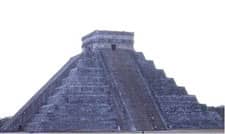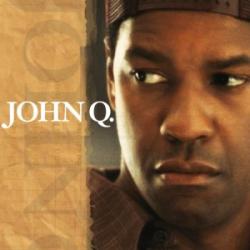By Mark Alan Wright
 The ancient Maya are celebrated for their complex understanding of mathematics and are rightly lauded for having invented the concept of zero, which, coincidentally, is the precise number of doomsday prophecies they made about the year 2012. Contrary to popular belief, they did not predict the world would come to a cataclysmic end or that there would be a devastating reversal of the earth's magnetic poles. Nor did they prophesy of a galactic alignment, a harmonic convergence, or even a winter solstice. Their calendar will not come to an end, nor will time itself. These ideas have no basis in indigenous beliefs, ancient or modern. To be clear, there are no ancient texts, no legitimate modern oral traditions, or anything in between that lends credence to any of these claims.
The ancient Maya are celebrated for their complex understanding of mathematics and are rightly lauded for having invented the concept of zero, which, coincidentally, is the precise number of doomsday prophecies they made about the year 2012. Contrary to popular belief, they did not predict the world would come to a cataclysmic end or that there would be a devastating reversal of the earth's magnetic poles. Nor did they prophesy of a galactic alignment, a harmonic convergence, or even a winter solstice. Their calendar will not come to an end, nor will time itself. These ideas have no basis in indigenous beliefs, ancient or modern. To be clear, there are no ancient texts, no legitimate modern oral traditions, or anything in between that lends credence to any of these claims.
From whence did such ideas spring, if not from the Maya themselves? The main proponents of such ideas have been untrained independent researchers and mystics within the New Age movement who have misinterpreted the beliefs and calendars of a wide range of Mesoamerican cultures and then conflated them with Eastern philosophies, astrology, and even Jungian psychology. Here we shall briefly examine why the various "prophecies" about 2012 fall flat.
Claim: The Maya calendar will come to an end on December 21 (or 23), 2012.
Not exactly. It will be the end of one major period in their calendar and the beginning of another, but it will not "end" any more than our own calendar did on January 1, 2000. The Maya used a five-place vigesimal system known as the "Long Count" that specifies the exact amount of time that had passed since the date of "creation" on 13.0.0.0.0, August 11 (or 13), 3114 B.C.
For example, Roland Emmerich's disaster flick 2012 will be released on November 13, 2009, which falls on 12.19.16.15.4 in the Long Count notation, which breaks down to (12 x 400 ‘years' of 360 days) + (19 x 20 ‘years') + (16 ‘years') + (15 x 20 days) + (4 days), or about 5,123 of our years since the date of "creation." There are differing accounts in the ancient inscriptions as to what actually happened on that date, but they all generally relate to themes of creation or a reordering of the cosmos.
The Maya would routinely commemorate Period Endings with the erection of a monument or perhaps the dedication of a building (a Period Ending is when the last two or three places in the Long Count are zeroes). The more zeroes, the bigger the celebration.
So what's so important about December 21, 2012? The Long Count date will be 13.0.0.0.0, which is not only a major period ending, but a recurrence of the date of creation as well. But, as sure as the sun rises, the next day will be 13.0.0.0.1, and the cycle will continue. There are different lines of evidence from the sites of Tikal, Palenque, and Yaxchilán that the calendrical cycle will continue until at least 19.0.0.0.0, or A.D. July 13, 4378, at which point it would either reset to zero or begin a higher order of reckoning using six places instead of five (e.g. 1.0.0.0.0.0). It needn't be an either/or situation, as local variations in the specifics of the calendar have been noted at some of the different ancient polities.
Claim: There will be widespread destruction or an apocalypse on December 21 (or 23) 2012.
False. Both the Maya and the Aztecs maintained a belief in four previous "ages" wherein the world had undergone some type of destruction and renewal, but the details surrounding the events and the dates associated with them all differ except for one key point; the current creation was not simply the latest, it was also destined to be the last.
We don't have much information from the ancient Maya themselves concerning these previous creations, but we do have a rich body of data from the Aztecs thanks to the Leyenda de los Soles ("Legend of the Suns") and the Stone of Axayacatl (the so-called "Aztec Calendar Stone"). Each of the first four "suns" or ages was associated with one of the cardinal directions (which are all off-center) and was ruled by gods who were in conflict with each other, making them inherently unstable. But the current creation, the one in which we now live, is fundamentally different because it is firmly situated in the fifth world direction, safely balanced in the center.
Claim: The Maya were master astronomers and predicted things such as a Galactic Alignment that only occurs every 26,000 years, the winter solstice of 2012, a reversal of the earth's magnetic poles, etc.
False. The Maya uttered no such prophecies, ever. Will there be a "Galactic Alignment" on the winter solstice in December 2012 during which the sun aligns with the "Galactic Equator"? Yes, but it has done so on each winter solstice since 1983 and will continue to do so until about 2019, and it has done so many times in the past. In fact, that the sun has aligned with the "Galactic Equator" on other days of the year, every year, since the beginning of time. There is nothing inherently special about this particular solstice day, and the Maya were completely silent about it. Even at the apogee of their civilization the Maya showed little concern for solstices and equinoxes, and none of these events was ever recorded in the ancient inscriptions. In general, Mayanists are far more obsessed with astronomy than the Maya ever were.
Claim: The year 2012 will mark the "dawning of a Wisdom Age."
The Maya certainly never uttered such a prophecy, but I confidently predict that as January 1, 2013 dawns, people will begin to wise up to the fact that the hysteria surrounded 2012 was nothing more than an exotic repackaging of Y2K fueled by misinformed pseudo-scholars, Hollywood hype-masters, and a gullible mainstream media. History repeats itself, again.
Mark Alan Wright is a doctoral candidate in Anthropology at UC Riverside with a subfield of specialization in Mesoamerican archaeology. He currently teaches part-time in the Department of Ancient Scripture at BYU.
11/6/2009 5:00:00 AM




